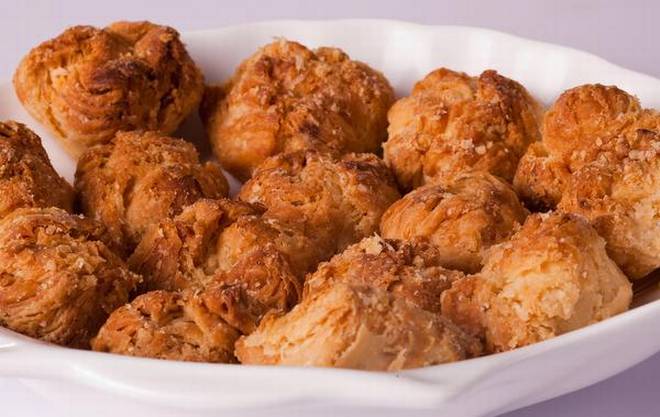The makers of the Ooty varkey, a crusty cookie that looks like a little box with its top smashed in, want to ensure its uniqueness with the help of a Geographical Indication tag. After all, if Hyderabad’s haleem, Tirupati’s laddoo and the Bengali rosogolla can have a GI tag, why not the Ooty varkey?
“Everyone, from mechanised bakeries in Kerala to people down on the plains with their own mix of ingredients, is selling ‘Ooty varkey’,” says Mohammad Farooq, president of the Ooty Varkey Manufacturers’ Association. “Getting a GI tag will put an end to this, and give the 40-50 bakeries in the Nilgiris a chance to hold on to this heritage food item,” he adds.
The industry body submitted the GI application in 2015 as per the Geographical Indications of Goods (Registration and Protection) Act 1999, but is still awaiting approval. “We are quite hopeful of getting a tag by the end of this year. It’s our exclusive product,” says Mohammad, who is the third-generation owner of Hindustan Bakery in Ooty.
Unlike other baked goods, the varkey doesn’t rely on good looks to make an impression. Looking at the many homespun bakeries in the Nilgiris, not many of the workspaces do either.
Yet, in terms of popularity, the varkey really — well — takes the biscuit. Baked to a golden brown, it looks more like a lump of dough that the chef forgot to finish shaping. But dip the varkey in a cup of tea or coffee, and it becomes instantly addictive. Soak a few in boiling milk, and 10 minutes later, it becomes a mushy breakfast food, like a bowl of cereal.
History and heritage
The cookie’s crisp and crunchy texture gives a possible clue to the root of its name. The Urdu word ‘varq’ means ‘thin layer’. According to the GI application (available online), the biscuit was invented in the hill station when it was the summer capital of the Madras Presidency. Confectioners in then-Ootacamund employed local and migrant labourers from Kerala to work at their ovens, to churn out large numbers of snacks to suit the tastes of the British Raj officials stationed there.
The Ooty varkey was a masterful local reinterpretation of the French puff pastry, which forms the basis of many pies and desserts. While the ingredients vary, the recipe calls for the same method of incorporating shortening or fat into the dough in stages.
“The plains’ version of varkey uses yeast,” says Mohammad. “But only Ooty varkey has a homemade leavening agent called maavai in it.” Basically the ‘mother dough’ (or starter) from the previous day’s batch, maavai or mava is made of banana, semolina, all-purpose flour (maida) and sugar. This is added to a bigger batch of maida, sugar and salt that forms the final dough.
Ooty’s varkey cannot be made by machines, asserts Jawahar Das, whose West Coast Bakery is a popular haunt for the biscuit’s fans. “This biscuit works well only with a dough that is kneaded by hand and baked in a brick oven with a wood fire,” says Jawahar. “In Ooty, the water from the natural springs also adds to the taste. Most varkey units in the Nilgiris are family-owned and operated.”
Due to the cold climate, cooking it can take up to 12 hours. “You need the right temperature (25 degrees Centigrade) to get the dough to ferment. And that is possible only during summer,” says Jawahar.
As a result, varkeys sell well only during the summer vacation months in Ooty. With bakeries like West Coast selling an average of 50-100 kilograms of varkeys in a day during the month of May, on the whole, it is estimated that up to 5,000 kilograms of varkeys are sold in summer, compared to 2,000 kilograms during the off-season.
The price is stipulated by the manufacturers’ association, and currently hovers in the range of ₹160 per kilo. “The Ooty varkey is also served at Toda tribal community’s social occasions,” says Jawahar.








